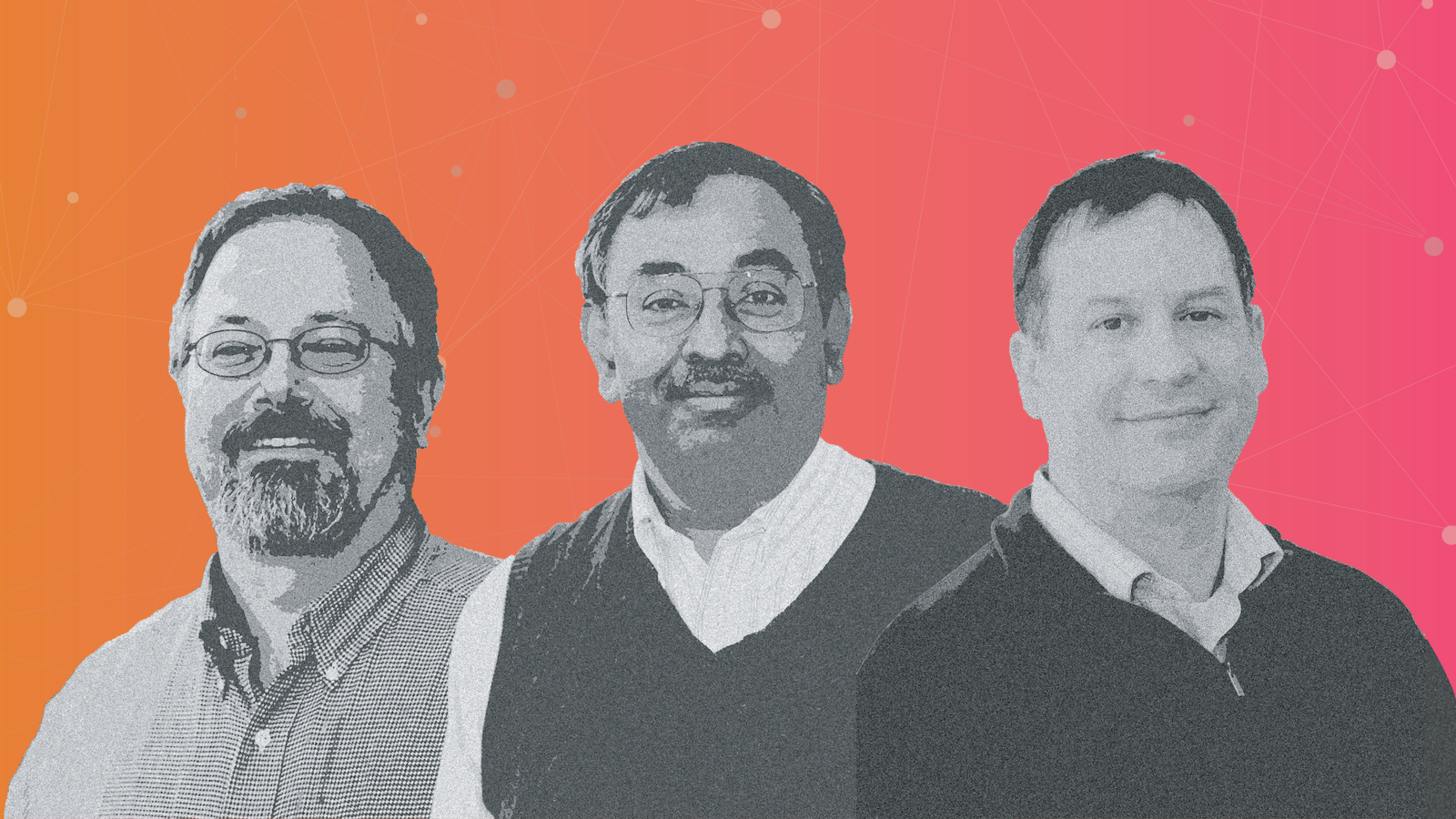
Biocomplexity Institute Trio Teaches High-Schoolers About Network Science
What do hip-hop and hurricane evacuations have to do with network science? High school students learned the answers to that and more in an inaugural series of network science lectures, given by University of Virginia Biocomplexity Institute researchers Chris Kuhlman, Dustin Machi and S.S. Ravi at the annual Achievable Dream Summer Program.
The trio volunteered their time to teach the 14 An Achievable Dream Academy students who attended the program, held at Virginia Tech July 12-16, after being asked to participate by Kristy Collins, director of education and outreach at Tech’s Fralin Life Sciences Institute.
The first lecture was an overview of network science, “where we attempted to convince the students that they deal with networks every day, and that they have intuitive knowledge about them,” said Machi, senior software architect in the Biocomplexity Institute’s Network Systems Science and Advanced Computing division. “Then we took a few of these ideas and made them more formal to illustrate that there exists a rigorous science that underlies, and is consistent with, their intuitions.”
“Our second lecture was about applications of network science to real-world problems, such as the transmission of diseases and spread of information in human populations during hurricane evacuations,” said Kuhlman, a Biocomplexity Institute research associate professor.
In preparation for the third lecture, students had to gather information on interactions among hip-hop artists and submit it prior to the lecture.
“From their data, we constructed a hip-hop network, presented it, and spent the hour during lecture talking about it and other hip-hop networks,” explained Ravi, a research professor at the Institute. “Because the students had a lot of pre-existing knowledge, they could make judgments about these networks and were even surprised in a couple of instances,” he said, adding, “We learned from them, too. Getting their perspectives and opinions are highly valuable. As one example, the students gave us new ideas for visualizations that we will put into the system.”
These reciprocal aha moments are so important to advancing science, the three said, and they tie directly to the educational outreach component of the CINES project, a five-year, $4 million collaborative grant the Institute received in February 2020 from the National Science Foundation. The project aims to build a self-sustaining cyberinfrastructure to serve as an open-source, web-based repository for developing, trading, analyzing, and sharing network science resources. The Biocomplexity Institute collaborates on the CINES project with partners from the academic, scientific and corporate sectors, among them Virginia Tech.
UVA and Virginia Tech are also university partners with the An Achievable Dream Academy in Newport News, Va. Around nine years ago, Virginia Tech began offering on-site programming for the student “dreamers,” as they are called. This summer is the first time a network science program was offered, Collins said, adding that it will continue next year.
In addition to the inaugural lecture series, the summer program gave students a variety of classroom and experiential learning opportunities that found them making magnetic slime, building paper microscopes, giving presentations, and identifying and measuring trees, Collins said.
“We are happy that, as part of the CINES project, Dr. Collins invited us to participate in the An Achievable Dream Summer Program,” Ravi said. “Up to this point, we had not interacted with high school students, and we had fun teaching and learning from them.”
Sixteen dreamers and two Academy teachers are already signed up for next year’s program. Jonothan Lister of the An Achievable Dream Academy selects who attends. Participating in the summer program allows students to build their academic resumes, learn life skills, have a welcoming college experience and see other parts of Virginia that are different from the large urban area where they live.
Lister said, “Students were excited about the opportunities and many shared how they were exposed to career paths that they have never thought of, but because of this program are going to research and maybe pursue.”
He added, “The array of activities and lectures put together at the Fralin Life Sciences Institute by Dr. Collins ignited a spark in the minds of our students, many of whom have never seen the inside of a college classroom … but now feel comfortable enough and that they belong so much so that they now have Virginia Tech as a ‘dream school.’ ”